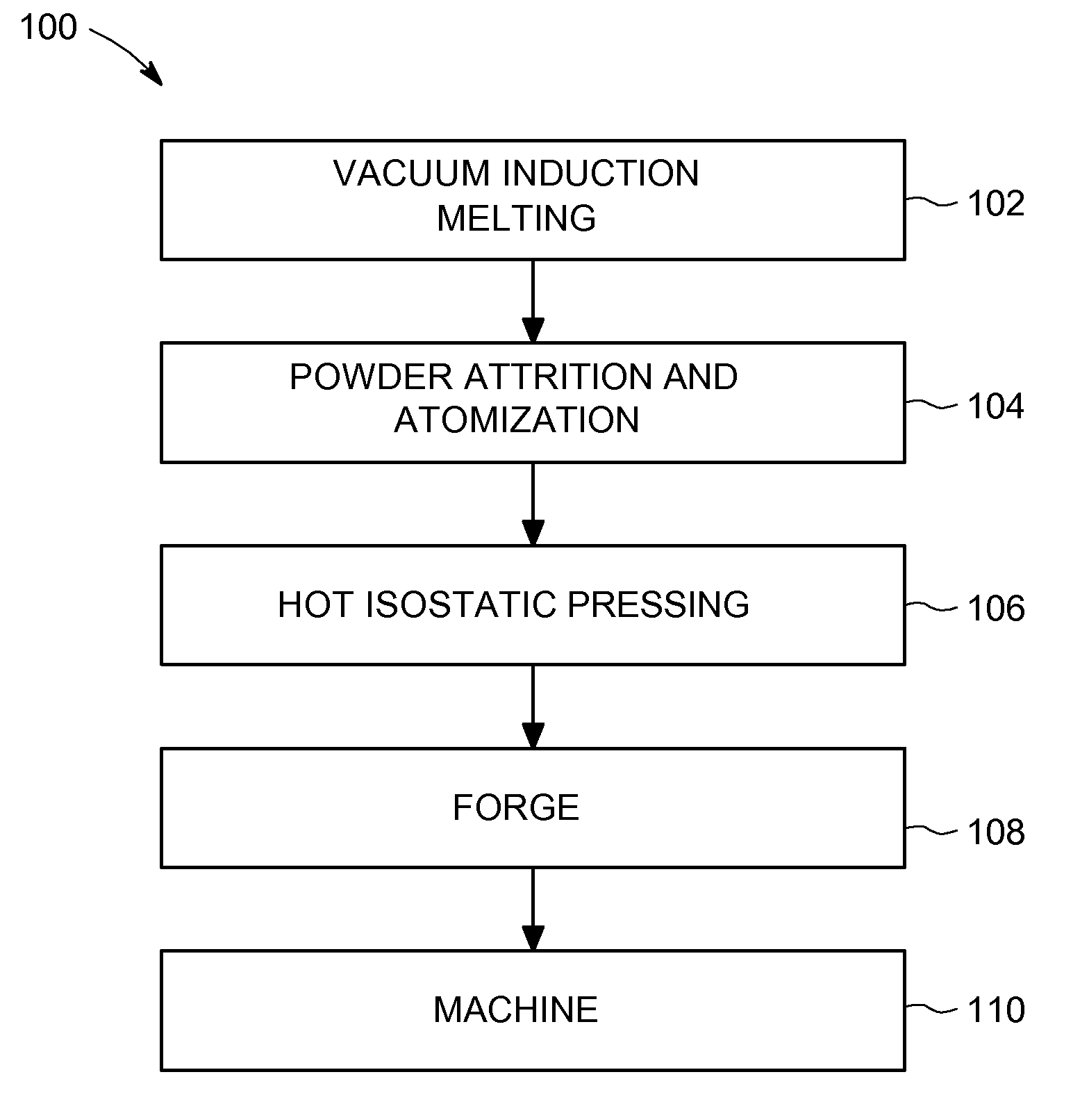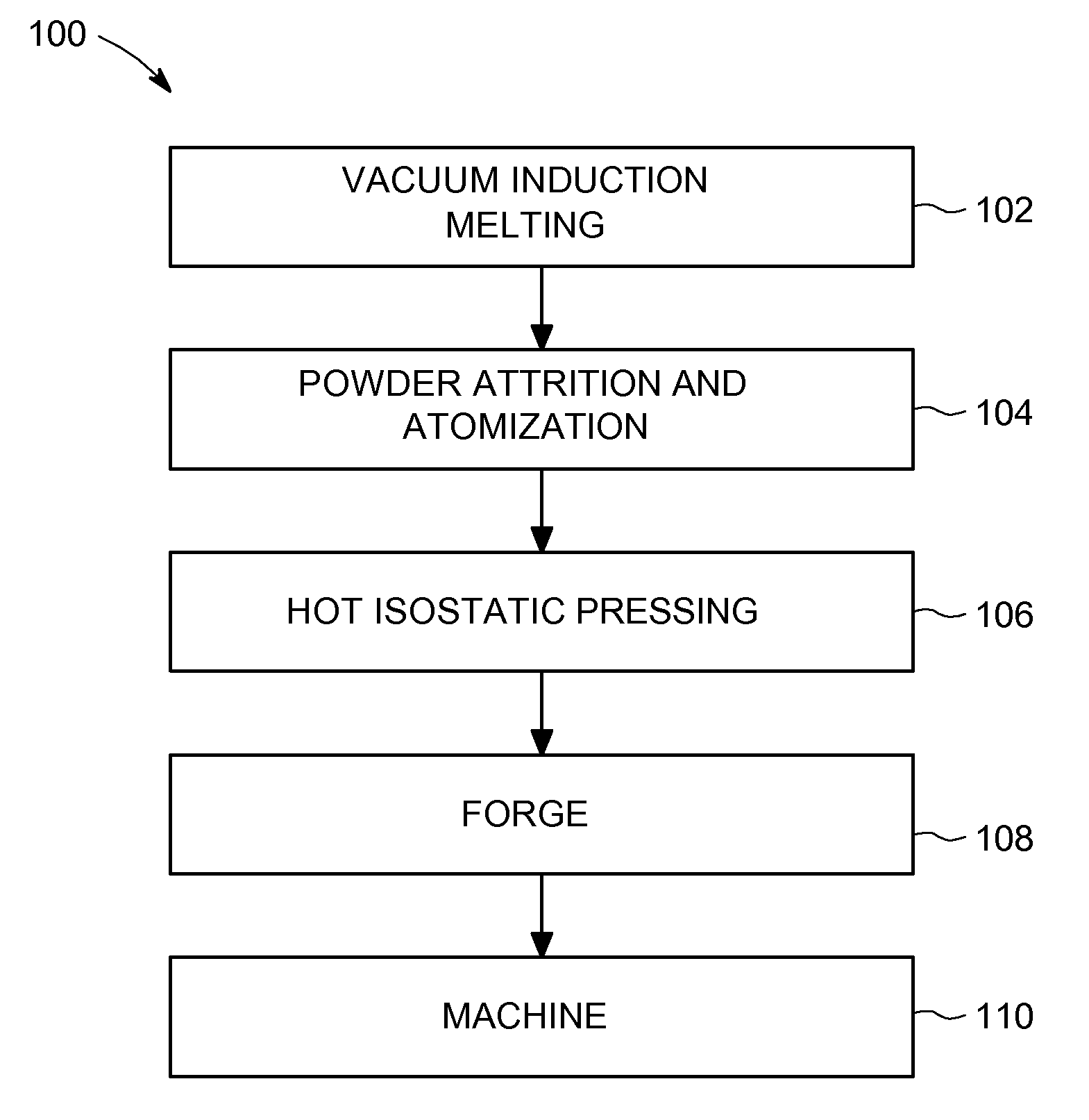Methods for processing nanostructured ferritic alloys, and articles produced thereby
a technology of ferritic alloys and nanostructures, applied in the field of nanostructured ferritic alloys (nfas), can solve the problems of high operating stress, and high operating temperature and stress on the components of turbines, and achieve the necessary mechanical properties. the coarse grain of the resulting var ingot is too coarse to yield the effect of mechanical properties
- Summary
- Abstract
- Description
- Claims
- Application Information
AI Technical Summary
Problems solved by technology
Method used
Image
Examples
example 1
[0042]A vacuum induction melting furnace is charged with the following composition: Fe-14Cr-0.4Ti-3W-0.5Mn-0.5Si (wt %). Once the alloy is molten and well mixed, it is atomized via argon gas. While still under inert gas coverage, the powder is sieved to a final cut size of +325 / −100 and sealed in a container. The powder is transferred to an attrition vessel while continuing to maintain inert gas coverage. In addition to the atomized powder, 0.25 weight percent of yttrium oxide and 5 mm steel shot is added to the attrition vessel. The steel shot is added such that the shot to powder ratio is 10:1 by mass. The powders are then milled for approximately 12 hours or until the yttrium oxide has been dissolved into the metal matrix. The powder is unloaded from the attritor under inert gas coverage and the steel shot is removed. Once the steel shot is removed, the powder is loaded into a container (or can) for hot isostatic pressing (HIP). The can is then evacuated at room temperature until...
PUM
| Property | Measurement | Unit |
|---|---|---|
| temperature | aaaaa | aaaaa |
| temperature | aaaaa | aaaaa |
| diameter | aaaaa | aaaaa |
Abstract
Description
Claims
Application Information
 Login to View More
Login to View More - R&D
- Intellectual Property
- Life Sciences
- Materials
- Tech Scout
- Unparalleled Data Quality
- Higher Quality Content
- 60% Fewer Hallucinations
Browse by: Latest US Patents, China's latest patents, Technical Efficacy Thesaurus, Application Domain, Technology Topic, Popular Technical Reports.
© 2025 PatSnap. All rights reserved.Legal|Privacy policy|Modern Slavery Act Transparency Statement|Sitemap|About US| Contact US: help@patsnap.com


